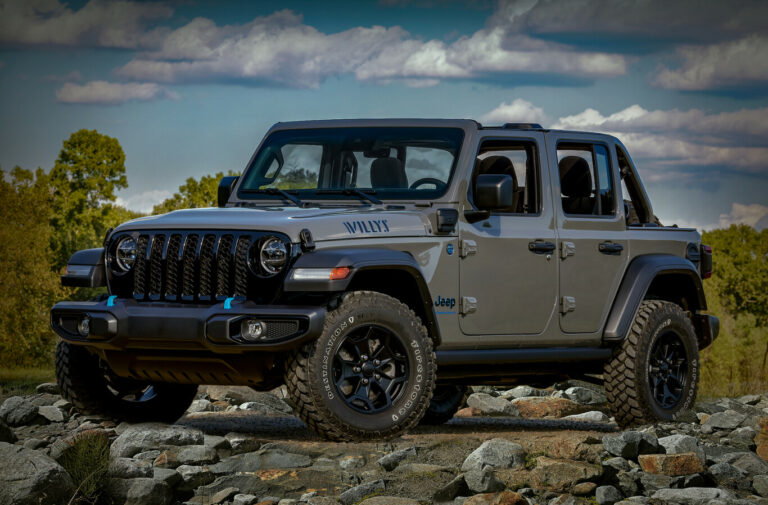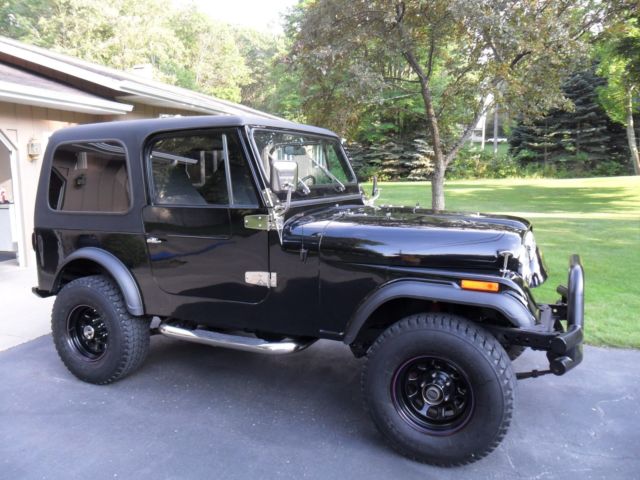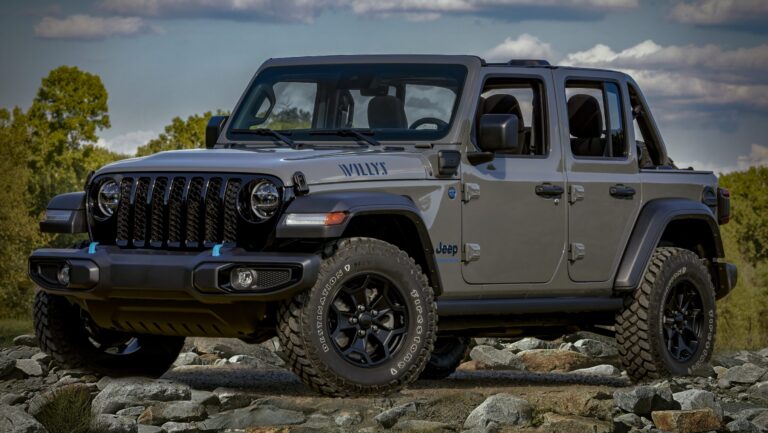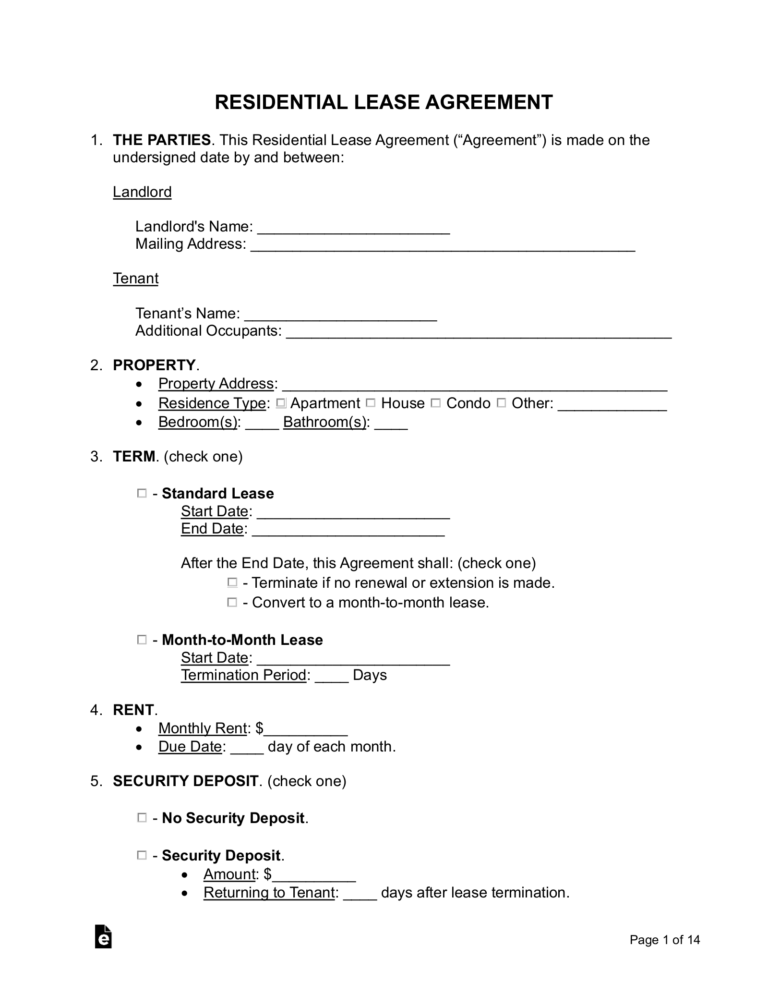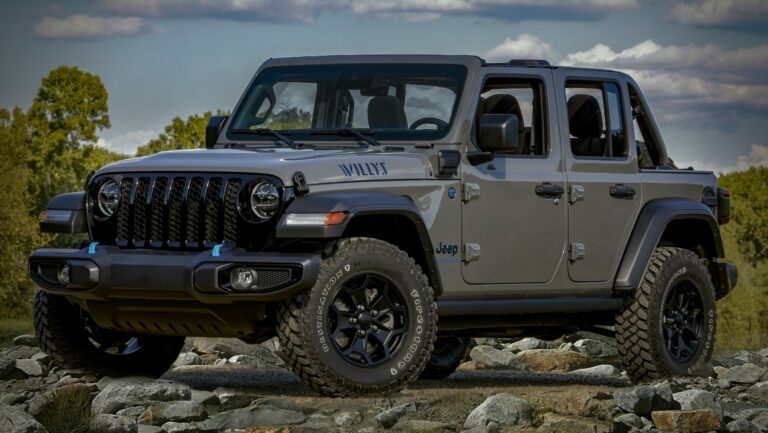2006 Jeep Commander 3.7 Engine For Sale: A Comprehensive Guide to Replacement and Revitalization
2006 Jeep Commander 3.7 Engine For Sale: A Comprehensive Guide to Replacement and Revitalization jeeps.truckstrend.com
Introduction: Breathing New Life into Your Commander
The 2006 Jeep Commander holds a special place for many as a robust, family-friendly SUV that blends off-road capability with a distinctive, blocky aesthetic. While celebrated for its rugged charm and spacious interior, like any vehicle of its vintage, the heart of the machine – its engine – can eventually show signs of wear, leading to the crucial decision of repair or replacement. For many 2006 Commander owners, the 3.7L PowerTech V6 engine is the powerplant in question. This article serves as a comprehensive guide for anyone looking for a "2006 Jeep Commander 3.7 Engine For Sale," exploring everything from why you might need one to how to successfully acquire and install it, ensuring your Commander continues its journey for years to come.
2006 Jeep Commander 3.7 Engine For Sale: A Comprehensive Guide to Replacement and Revitalization
Finding a replacement engine isn’t just about a simple transaction; it’s about making an informed decision that balances cost, reliability, and the longevity of your beloved vehicle. Whether you’re a seasoned mechanic, a DIY enthusiast, or simply a Commander owner facing an unexpected breakdown, understanding the nuances of purchasing a replacement 3.7L engine is paramount.
Why Consider a Replacement 3.7L Engine? Common Issues and the Case for Revival
Even the most well-maintained engines have a finite lifespan. For the 3.7L PowerTech V6 found in the 2006 Jeep Commander, common reasons for seeking a replacement include:
- High Mileage Wear: Engines accumulating 150,000 to 200,000 miles or more are naturally prone to increased oil consumption, reduced compression, and general fatigue of internal components.
- Overheating Damage: Persistent overheating can warp cylinder heads, crack engine blocks, and damage gaskets, leading to catastrophic failure.
- Oil Starvation/Sludge: Neglected oil changes can lead to oil starvation in critical areas, causing bearing failure, cam lobe wear, and overall engine seizure. The 3.7L, like many engines of its era, can be susceptible to sludge buildup if maintenance is lax.
- Timing Chain Issues: While less common than some other problems, timing chain stretch or failure can lead to severe internal engine damage.
- Rod Knock/Bearing Failure: A distinct knocking sound, often indicative of worn connecting rod or main bearings, signals imminent engine failure.

Rather than scrapping a vehicle that still has a good chassis, transmission, and body, replacing the engine often presents a far more economical and environmentally friendly solution than purchasing a new or used vehicle. It allows you to retain the vehicle you know and love, avoiding the depreciation and higher insurance costs associated with a new purchase.
Understanding the 3.7L PowerTech V6 Engine
The 3.7L PowerTech V6 engine (also known as the Magnum V6) is a SOHC (Single Overhead Camshaft) 12-valve engine that was a workhorse for Chrysler, Dodge, and Jeep vehicles from 2002 to 2012. In the 2006 Jeep Commander, it typically produced around 210 horsepower and 235 lb-ft of torque, offering a good balance of power for daily driving and light towing.

Key Characteristics:
- Displacement: 3.7 Liters (3701 cc)
- Cylinders: V6
- Valvetrain: SOHC, 2 valves per cylinder
- Fuel System: Multi-port fuel injection
- Block Material: Cast Iron
- Head Material: Aluminum

While generally reliable when properly maintained, understanding its common failure points, as mentioned above, helps in assessing the value and potential longevity of a replacement unit.
Types of 2006 Jeep Commander 3.7L Engines Available for Sale
When searching for a replacement engine, you’ll primarily encounter three main categories, each with its own benefits and drawbacks:
-
Used/Salvage Engines:
- Description: These are engines pulled from donor vehicles, often from junkyards or salvage yards. They come "as is" and their history can be largely unknown.
- Pros: Most affordable option. Quick availability.
- Cons: Unknown mileage and maintenance history. Higher risk of internal wear or hidden damage. Limited or no warranty. Requires thorough inspection.
- Best For: Budget-conscious buyers willing to take a higher risk, or those with the expertise to rebuild/inspect.
-
Remanufactured/Rebuilt Engines:
- Description: These engines have been disassembled, thoroughly inspected, cleaned, and had worn or damaged components (like pistons, rings, bearings, gaskets, and seals) replaced with new or reconditioned parts. They are then reassembled to original factory specifications.
- Pros: Much higher reliability than used engines. Come with a warranty (often 1-3 years). All wear parts are new. Tested before sale.
- Cons: Higher cost than used engines. May have a core charge (you return your old engine).
- Best For: Buyers seeking a reliable, long-term solution with peace of mind from a warranty.
-
New Crate Engines:
- Description: A brand-new engine, typically from the original equipment manufacturer (OEM) or an aftermarket supplier. These are rare and usually very expensive for older models like the 2006 Commander.
- Pros: Brand new, zero miles, full factory warranty, ultimate reliability.
- Cons: Extremely expensive, often cost-prohibitive for a vehicle of this age. Limited availability.
- Best For: Rarely a practical option for a 2006 Commander due to cost, unless the vehicle has significant sentimental value or is undergoing a complete, high-budget restoration.
Key Factors When Buying a 2006 Jeep Commander 3.7 Engine
Making an informed purchase requires careful consideration of several factors:
- Mileage and Condition (for Used Engines): Lower mileage is generally better. Ask for proof of mileage (e.g., donor vehicle VIN, odometer reading). Visually inspect for signs of leaks, corrosion, or impact damage.
- Source/Seller Reputation: Buy from reputable sellers, whether it’s a dedicated engine supplier, a certified salvage yard, or a well-regarded remanufacturer. Check online reviews and ask for references.
- Warranty: This is crucial. Used engines might have a 30-90 day warranty, while remanufactured engines typically offer 1-3 years. Understand what the warranty covers (parts only, labor, shipping?) and what voids it.
- Completeness (Long Block vs. Short Block vs. Complete Drop-in):
- Short Block: Engine block, crankshaft, connecting rods, pistons. No cylinder heads, camshafts, or valvetrain. Requires transferring many components.
- Long Block: Short block plus cylinder heads, valvetrain, and sometimes the oil pan and valve covers. This is the most common and practical option for a replacement.
- Complete Drop-in: Includes all accessories like intake manifold, exhaust manifold, alternator, power steering pump, A/C compressor, etc. Easiest to install but most expensive.
- For a 2006 Commander 3.7L, a long block is usually the sweet spot for cost and convenience.
- Compatibility: Ensure the engine is specifically for a 2006 Jeep Commander 3.7L. While the 3.7L was used in many vehicles, there can be subtle differences in sensor locations, accessory mounts, or ECU compatibility that can cause headaches. Provide your VIN to the seller for verification.
- Shipping and Logistics: Factor in shipping costs, which can be substantial for an engine. Confirm packaging, delivery timelines, and insurance for transit.
The Purchase Process: A Step-by-Step Guide
- Diagnosis: Confirm your existing engine truly needs replacement. Rule out simpler, less expensive repairs.
- Research Sellers: Search online marketplaces (eBay Motors, dedicated engine suppliers like LKQ, Jasper Engines, ATK Engines), local salvage yards, and reputable remanufacturers.
- Gather Information: For each potential engine, collect details: type (used/reman), mileage (if used), warranty, completeness, and price.
- Ask Questions: Don’t hesitate to ask detailed questions about the engine’s history, testing procedures (if remanufactured), and what is and isn’t included.
- Verify Compatibility: Provide your VIN to the seller to ensure the engine is a direct fit for your 2006 Commander.
- Review Warranty: Read the warranty terms carefully. Understand coverage, duration, and requirements for activation (e.g., professional installation, specific fluids).
- Payment and Shipping: Use secure payment methods. Confirm shipping details, estimated delivery, and tracking information.
- Pre-Installation Inspection: Once received, thoroughly inspect the engine for shipping damage, missing parts, or discrepancies before accepting delivery or starting installation.
Installation Considerations: DIY vs. Professional
Replacing an engine is a significant undertaking that requires specialized tools, mechanical knowledge, and often, an engine hoist.
-
Professional Installation:
- Pros: Expertise, proper tools, often comes with a labor warranty, peace of mind, faster completion.
- Cons: Significant labor costs (can easily match or exceed the engine cost).
- Recommendation: Highly recommended unless you are an experienced mechanic with the right equipment.
-
DIY Installation:
- Pros: Saves on labor costs, personal satisfaction.
- Cons: Requires extensive mechanical knowledge, specialized tools (engine hoist, stand, torque wrenches, diagnostic scanner), can be time-consuming, risk of errors leading to further damage.
- Recommendation: Only attempt if you have prior engine replacement experience and all necessary equipment.
Additional Parts and Fluids: Regardless of who installs it, budget for new:
- Gaskets and seals (if not included with the engine)
- Fluids (engine oil, coolant, power steering fluid, transmission fluid if lines are disconnected)
- Spark plugs
- Oil filter
- Belts and hoses (consider replacing while access is easy)
- Thermostat
- Exhaust gaskets
Potential Challenges and Solutions
- Finding a Reliable Engine: Stick to reputable sellers with good reviews and clear warranty policies.
- Shipping Damage: Inspect the engine immediately upon arrival. Take photos of any damage and contact the seller/shipper immediately.
- Compatibility Issues: Double-check part numbers and provide your VIN to the seller. If issues arise post-delivery, communicate with the seller promptly.
- Post-Installation Problems: Follow the manufacturer’s break-in procedures (if applicable for remanufactured engines). Use proper fluids. Get a professional diagnosis for any new noises or warning lights. Most warranties require professional installation for validity.
Estimated Price Range for 2006 Jeep Commander 3.7 Engine For Sale
Please note: These are estimated price ranges and can vary significantly based on the seller, location, current market demand, engine condition, and included components. Always get a specific quote.
| Engine Type | Condition/Mileage | Typical Warranty | Estimated Price Range (USD) | Notes |
|---|---|---|---|---|
| Used/Salvage | 80,000 – 150,000 miles | 30-90 days | $800 – $1,800 | "As-is," unknown history. Price heavily depends on mileage and seller. Often requires significant cleaning/inspection. |
| 150,000+ miles | Limited/None | $500 – $1,000 | Highest risk, suitable for core or major rebuild. | |
| Remanufactured | Zero miles since rebuild | 1-3 years (parts/labor) | $2,000 – $3,500 | Thoroughly rebuilt to OEM specs. Most common and recommended option for reliability. May include a core charge ($300-$500). |
| New Crate Engine | Brand new, zero miles | 3-5 years (factory) | $4,500 – $7,000+ | Extremely rare for this specific application. Typically only from OEM or very specialized suppliers. Often not cost-effective. |
Disclaimer: Prices do not include shipping costs, core charges, or installation labor.
Frequently Asked Questions (FAQ) about the 2006 Jeep Commander 3.7 Engine
Q1: Is it worth replacing the engine in a 2006 Jeep Commander?
A1: Often, yes. If the rest of the vehicle (chassis, transmission, body, interior) is in good condition, replacing the engine is usually more cost-effective than buying a comparable new or used vehicle, especially when considering depreciation and insurance costs.
Q2: What’s the main difference between a used and a remanufactured engine?
A2: A used engine is pulled from another vehicle and sold as-is with its existing wear. A remanufactured engine has been completely disassembled, inspected, and had all worn components replaced with new or reconditioned parts, essentially restoring it to like-new condition, and typically comes with a warranty.
Q3: How long does it take to replace a 3.7L engine in a Commander?
A3: For an experienced professional mechanic, a complete engine swap can take anywhere from 12 to 20 hours of labor. This translates to 2-3 full days in a shop, depending on scheduling and any unforeseen issues. DIY can take much longer.
Q4: What’s a "long block" versus a "short block"?
A4: A short block includes the engine block, crankshaft, connecting rods, and pistons. A long block includes everything in a short block, plus the cylinder heads, camshafts, and valvetrain. A long block is generally preferred for replacement as it reduces the amount of component transfer from your old engine.
Q5: Are there any common issues with the 3.7L PowerTech engine I should be aware of?
A5: While generally robust, common issues can include oil sludge if maintenance is neglected, potential valve seat issues (though less common in later models), and occasional cooling system problems leading to overheating if not addressed promptly. When buying a used engine, inquire about its maintenance history if possible.
Q6: Do I need to "break in" a new or remanufactured engine?
A6: Yes, absolutely. Remanufactured engines, in particular, require a break-in period to properly seat piston rings and bearings. Follow the remanufacturer’s specific instructions, which typically involve varying RPMs, avoiding heavy loads, and an early oil change.
Conclusion: Driving Forward with Confidence
The decision to seek a "2006 Jeep Commander 3.7 Engine For Sale" is a significant step towards extending the life and utility of your vehicle. By understanding the types of engines available, the crucial factors to consider during purchase, and the nuances of installation, you empower yourself to make an informed choice. Opting for a quality replacement engine, especially a reputable remanufactured unit, can provide many more years of reliable service, allowing your Commander to continue its adventures. With careful research and a strategic approach, your 2006 Jeep Commander can indeed receive a new lease on life, ready to tackle roads and trails with renewed vigor.


